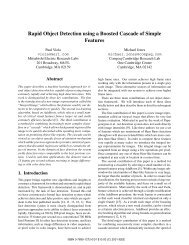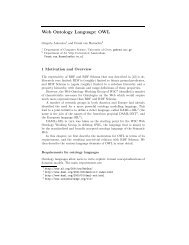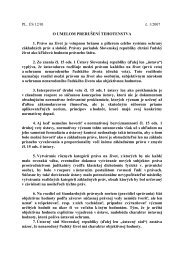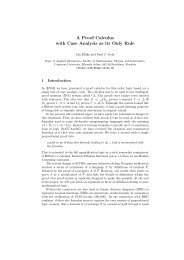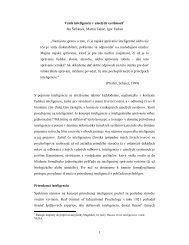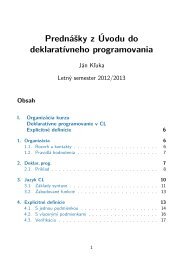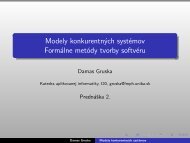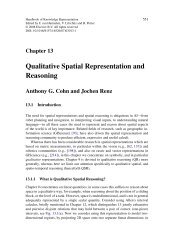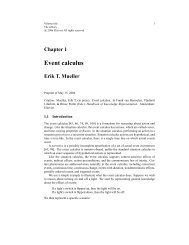A Simple and Practical Valuation Tree Calculus for First-Order Logic
A Simple and Practical Valuation Tree Calculus for First-Order Logic
A Simple and Practical Valuation Tree Calculus for First-Order Logic
Create successful ePaper yourself
Turn your PDF publications into a flip-book with our unique Google optimized e-Paper software.
14 Ján Kľuka <strong>and</strong> Paul J. Voda4.9 Theorem (Soundness <strong>and</strong> completeness of ⊢e). We have T ⇒ L,∅ Siff D ⊢e T ⇒ L,∅ S <strong>for</strong> a free cut free D.Proof. Soundness (←) follows from the propositionif D ⊢e T ⇒ L, ⃗ F S, then T ⇒ L, ⃗ F S,proved by induction on D. In the base case, we have (T ∩ ∆), Eq ∗ ∆, F ⃗ (Γ ) ⇒ L, F ⃗(S ∩ Γ ), ∆ because it is a weakening of an initial quantification property. Wewish to show that also T, Γ ⇒ L, F ⃗ S, ∆ holds. So we take a structure M <strong>for</strong> L ofT, Γ . By Lemma 4.5, we also have M Eq ∗ ∆, F ⃗ (Γ ), <strong>and</strong> thus M can be exp<strong>and</strong>edto satisfy one of (S ∩Γ ), ∆ <strong>and</strong> hence one of S, ∆. Induction step follows directlyfrom Thm. 3.6 since we must have F ⃗ = ∅.Completeness (→) follows from Lemma 4.8 by an auxiliary lemma correspondingto Lemma 2.15.⊓⊔4.10 Discussion. Our treatment of full first-order logic uses equality automatically.This is not only possible, but also feasible, by the existence of an efficientcongruence closure algorithm of [DST80].We have on purpose proved the completeness of our calculi by reduction ofcorresponding complete sequent calculi. The reason was that we wished to exhibitsimilarities between sequent proofs <strong>and</strong> valuation trees. In a self-containedexposition we would employ the well-known direct method used with sequentcalculi. The method is even more natural with valuation trees. We must permitinfinite valuation trees <strong>and</strong> assure that we systematically assign truth values toall sentences in T, S as well as to all immediate sub<strong>for</strong>mulas of sentences appearingon branches closer to the root of the constructed valuation tree. This meansin particular, that we must use all terms of L <strong>for</strong> the instantiation of quantifiers.If such a systematic procedure fails to stop with a finite valuation tree, <strong>and</strong> thusfails to e-witness the property T ⇒ S, then the tree must contain an infiniteconsistent path. We then per<strong>for</strong>m the well-known construction used also in theproof of Lemma 4.6 to construct a structure giving all sentences on the paththeir assigned values. The structure will thus satisfy T <strong>and</strong> falsify all of S.5 Extensions of Theories by DefinitionsIn this section we treat extension of theories by definitions of predicate <strong>and</strong> functionsymbols. For that it suffices to extend the base case of the proof predicate⊢e with new initial properties justifying the extensions.5.1 Initial extension properties. Initial extension properties are the initialquantification properties (see Par. 3.4) plus the following ones:(PDef)(FDef)∅ ⇒ L,R ∀⃗x (R(⃗x) ↔ A[⃗x])∀⃗x ∃!y B[⃗x, y] ⇒ L,f ∀⃗x ∀y (f (⃗x) = y ↔ B[⃗x, y]).<strong>for</strong> any <strong>for</strong>mulas A[x 1 , . . . , x n ], B[x 1 , . . . , x n , y] in L with only the indicatedvariables free <strong>and</strong> any symbols R, f not in L.



